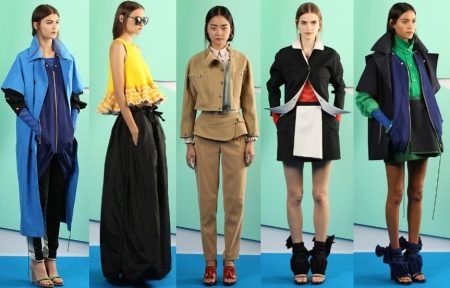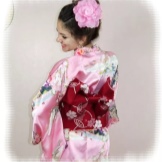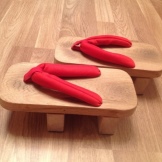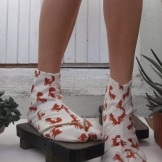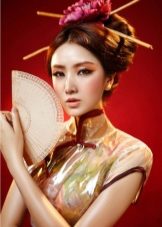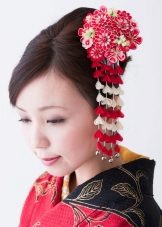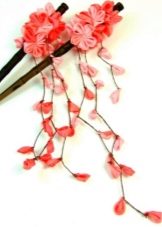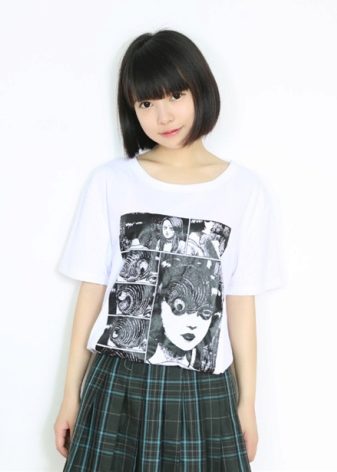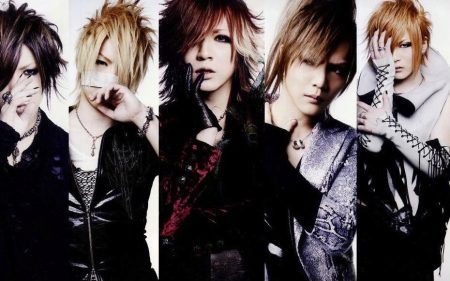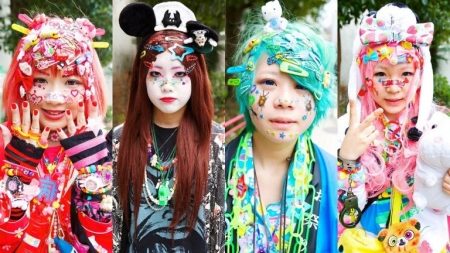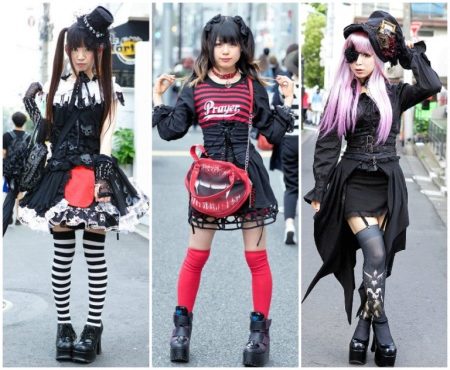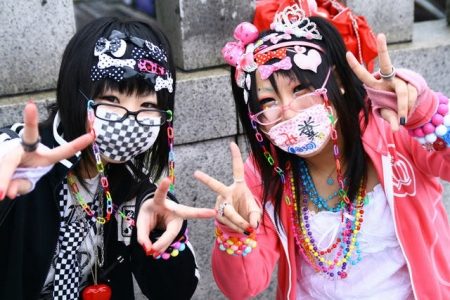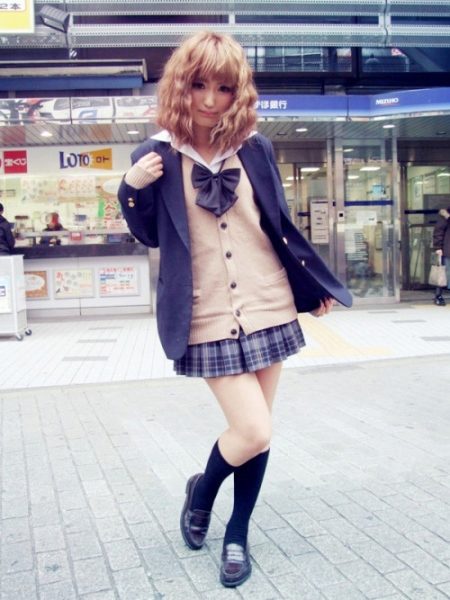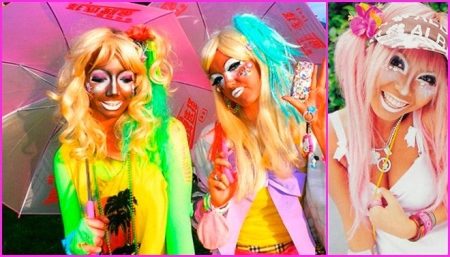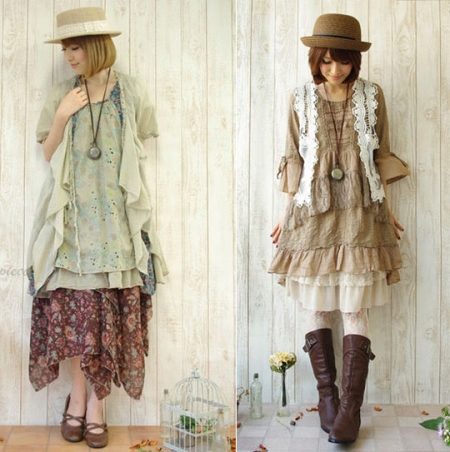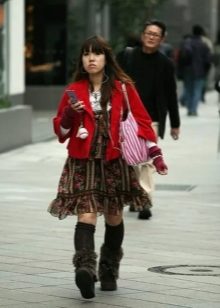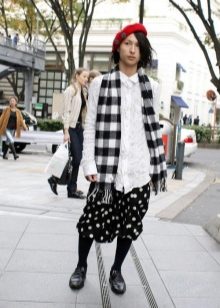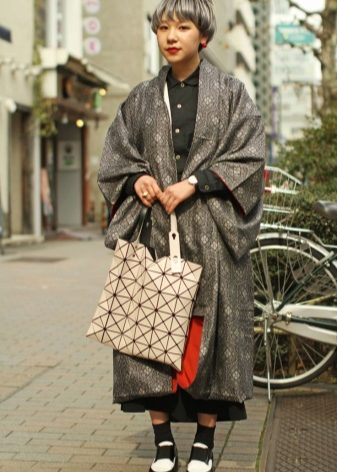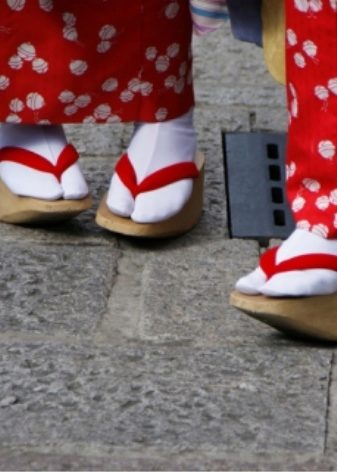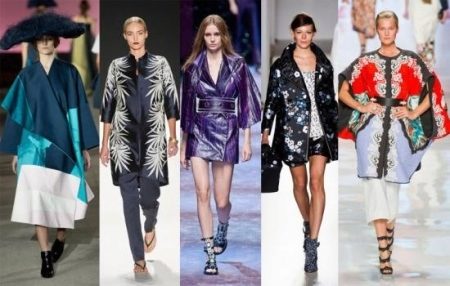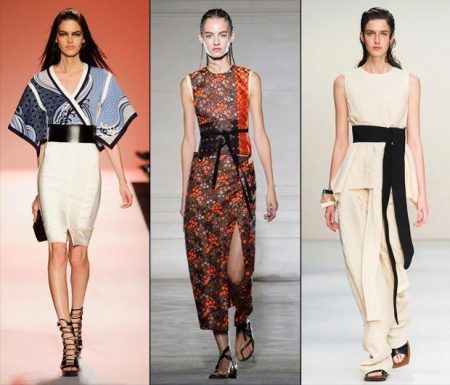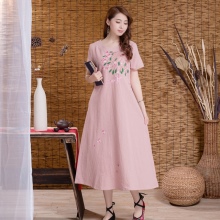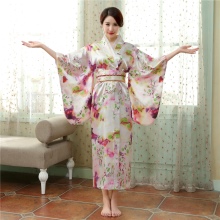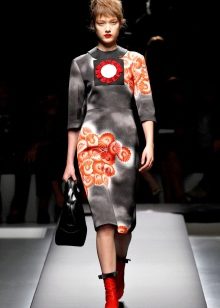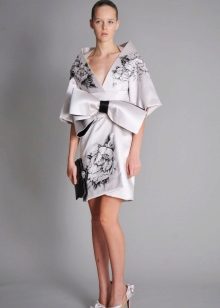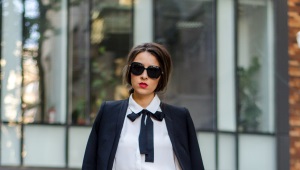Japanese style in clothes
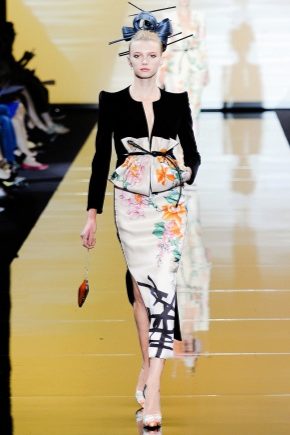
Modern fashion does not do without the Japanese style. After all, he dilutes European conservatism and conciseness. Many nuances and fashionable details from this country have brought freshness and originality to the design of clothes. Everything is used: cut, textured fabrics, unusual accessories - to create a unique image.
Japanese woman can not be imagined without the traditional dress-robe. Her wardrobe also includes the following elements:
-
blouse wide cut;
-
spacious skirt-pants;
-
obi belt, which is tied in the form of a bow under the breast;
-
leather or cloth sandals with a flat sole;
-
wooden shoes on a high platform - geta;
-
socks with a separate thumb - tabi.
Fans with various patterns, hairpins, bracelets, and earrings are used as accessories. Especially loved things made by hand. These include not only jewelry, but also handbags.
Clothes for children and adults can not do without the image of your favorite cartoon characters, anime.
Kimono and yukata are not only traditional Japanese clothes, but also an established stereotype. Japan is shrouded by well-established notions. But here various streams originate and develop. In many ways, this is promoted by lively, vibrant and creative young people who create all kinds of subcultures.
Street fashion for girls
The streets of Japanese cities are reminiscent of fashion podiums. Street fashion is very developed here, it is extravagant and unusual. There are 10 most famous youth styles that originated in the Land of the Rising Sun.
Visual Kei (visual style)
Distinctive features: a catchy make-up and clothes in black, white and red colors. Material - leather, metal. Corsets, cylinders, dressings, original lenses are used.
Decora (Decor)
This is the style of accessories and parts lovers. The main principle: the more the better. Wear hairpins, bows, bracelets, chains - everything you find at home and borrow from your friends.
Cosplay (costume game)
Adherents of this style wholeheartedly love anime and computer games and imitate animated characters. They try to be as close as possible to their beloved heroes both in clothing and in behavior.
Kawaii (Kawai)
Pastel colors in clothes and boundless grace and plushness are the distinctive features of this style. Fashionistas imitate soft toys, behave touchingly, childishly. And they look accordingly.
Kigurumi (Kigurumi)
Overalls in the form of various little animals came into Japanese fashion from children's parties and promotions. These soft, fluffy costumes are used as street clothes and home pajamas.
Harajuku (Harajuku)
Bright colors - pink, blue, purple. A lot of accessories, jewelry. Vintage details are combined with all sorts of contrasting shades.
Lolita (Lolita)
Direction for girls who want to stay young, sweet and tender, regardless of age. Romantic dresses with ruffles and floral prints, a little hairpins and decorations, an umbrella and a light hairstyle - the image of Lolita is created.
Ko Gal
Ko Gal girls wear school uniforms with miniskirts, knee-highs and children's decorations. Their hair is dyed bright and there is tanning on the skin.
Ganguro (Ganguro)
Fashionable women stand out with white, pink hair, very tanned skin, short skirts, high heels. The main thing - to emphasize the contrast between dark skin and bright hair, clothing, makeup.
Mori Girl (Mori Gerl)
Clothes and make-up should emphasize the natural beauty of the girl. Gentle tones in clothes, a cage or a flower print are used.Romantic dresses with lace and ruffles. The minimum number of accessories from genuine leather.
Details
Nowadays, kimono has not lost its relevance and is not out of fashion. It is only transformed. Now traditional dress is a wide blouse with a V-neck under the throat, tied up under the chest with a belt. In colors and prints, designers give vent to themselves.
Primary colors in Japanese style:
- red,
- the black,
- white.
Japanese look will help to create details and specific rules.
-
Layering (you can combine a dress, jeans, tunic).
-
Contrasting combinations of materials, fabrics, styles.
-
Bright, unusual, natural patterns in clothes.
-
Images of anime characters.
-
Shoes with high heels, high platform.
-
Many accessories.
-
Skirts and dresses have turns and assemblies.
-
Japanese-style outerwear has a loose silhouette and hides women's curves and roundness.
Traditions in Japan
Japan is a land of tradition. The features of them should be known and respected, if you are a supporter of this style. They apply not only to clothing. In the summer, it is better to wear clothes made from natural materials - flax, cotton, silk. Socks should always be clean. Tattoos and body piercing are prohibited. The image should be modest and elegant.
The basis of the Japanese wardrobe is a wrap-around tunic. This print is used the most unusual, colorful, bright. It can be all kinds of birds, plants, flowers, mythical creatures, patterns, resembling painting on porcelain.
Features and details of kimono are used by designers not only in dresses, but also in overalls, skirts, blouses, jackets. The obi belt is often tied not only over the kimono, but also other clothes - jeans, tunics. Completing the Japanese image shoes on a high platform - geta.
Easy, romantic image will help create a flowing outfit of silk loose fit. The traditional Japanese ornament combined with modern wardrobe elements will look original.
Keeping traditions, the Japanese are ahead of the rest. This also applies to fashion trends. In the trend today, Japanese women have wide trousers, open tops, woven bags, pleated skirts, free-cut dresses. Shawls, hats and, you will be surprised, cardigans act as accessories. They can be draped over the shoulders or tied at the waist.
To master the Japanese style is quite difficult. For this you need to live in this country. But every woman can bring an oriental flavor to her image with the help of ethnic elements.
